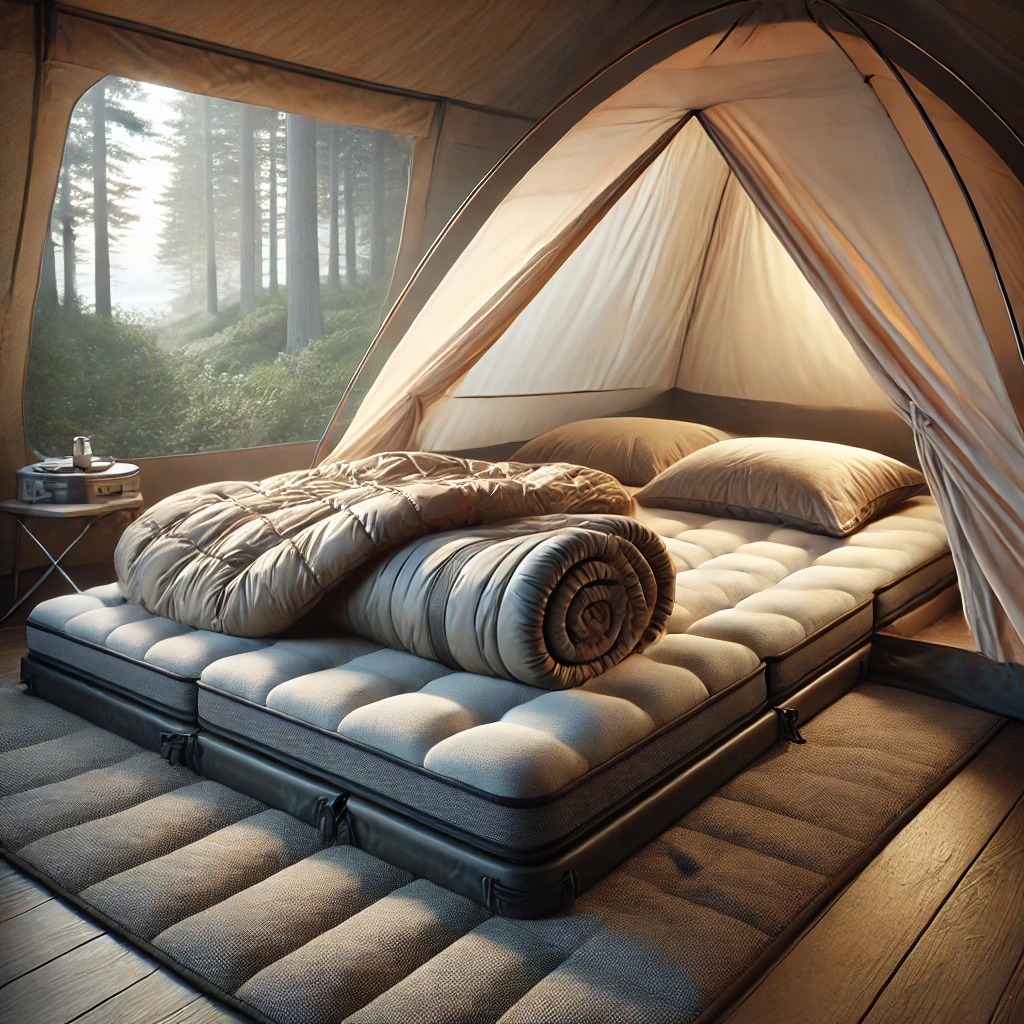Address
304 North Cardinal
St. Dorchester Center, MA 02124
Work Hours
Monday to Friday: 7AM - 7PM
Weekend: 10AM - 5PM
Address
304 North Cardinal
St. Dorchester Center, MA 02124
Work Hours
Monday to Friday: 7AM - 7PM
Weekend: 10AM - 5PM

Getting a good night’s sleep is essential when camping, but the ground can be hard and uncomfortable. Fortunately, there are ways to create a comfortable camping bed to ensure you get the rest you need for the next day’s adventures. Here’s how to make your camping bed as comfortable as possible.
Start by selecting the right sleeping bag for the weather conditions. If you’re camping in cold weather, choose a sleeping bag that’s rated for temperatures lower than what you expect. For warmer weather, a lightweight sleeping bag or even a sleeping bag liner may be sufficient.
A sleeping pad or air mattress is essential for cushioning your body from the hard ground. Look for a pad with a high R-value if you’re camping in cold conditions, as it will provide insulation. Air mattresses are great for more comfort, but make sure they are durable and compact for easy packing.
Using a pillow can significantly improve the comfort of your sleeping arrangement. If you don’t have a camping pillow, use a stuff sack filled with clothes to create a makeshift pillow. This will support your neck and help you sleep better.
To keep moisture from seeping into your sleeping bag, lay down a groundsheet or tarp beneath your sleeping pad or air mattress. This provides an extra layer of protection from the dampness of the ground and can help keep you warm and dry during the night.
If you’re camping in cooler conditions, consider bringing an extra blanket or sleeping bag liner. This will add an extra layer of warmth without the bulk of a larger sleeping bag. Fleece or down blankets are lightweight and compress well for easy packing.
To enhance your comfort, choose a campsite with a flat and level surface. Avoid areas with rocks, roots, or uneven ground that can make it hard to sleep. If you’re camping in a tent, place your sleeping setup inside the tent and away from the entrance to avoid drafts or moisture.
If you’re camping in a wilderness setting without a tent, use layers of natural materials to create a comfortable sleeping surface. Collect pine needles, dry leaves, or grass to build a natural mattress. This will help insulate you from the cold ground while adding some cushion.
A wet sleeping bag can ruin your camping experience. Always make sure your sleeping bag is kept dry by storing it in a waterproof stuff sack or keeping it inside your tent. You can also line your sleeping bag with a liner to add a layer of protection from moisture.
Wind can make it difficult to stay warm, especially when sleeping outside. Set up a windbreak using natural materials like rocks, or use a camping tarp to create a barrier against the wind. This will help you stay warmer through the night and reduce exposure to the elements.
If you’re camping in a suitable location, a hammock can be an incredibly comfortable option. Hammocks keep you off the ground and can provide a relaxing sleeping position. Make sure to use a sleeping pad or underquilt to provide insulation from the cold air underneath you.
To ensure a good night’s sleep while camping, invest in quality gear and take the time to set up your sleeping area thoughtfully. A comfortable camping bed can make a huge difference in your overall camping experience and help you feel refreshed and ready for the day ahead.